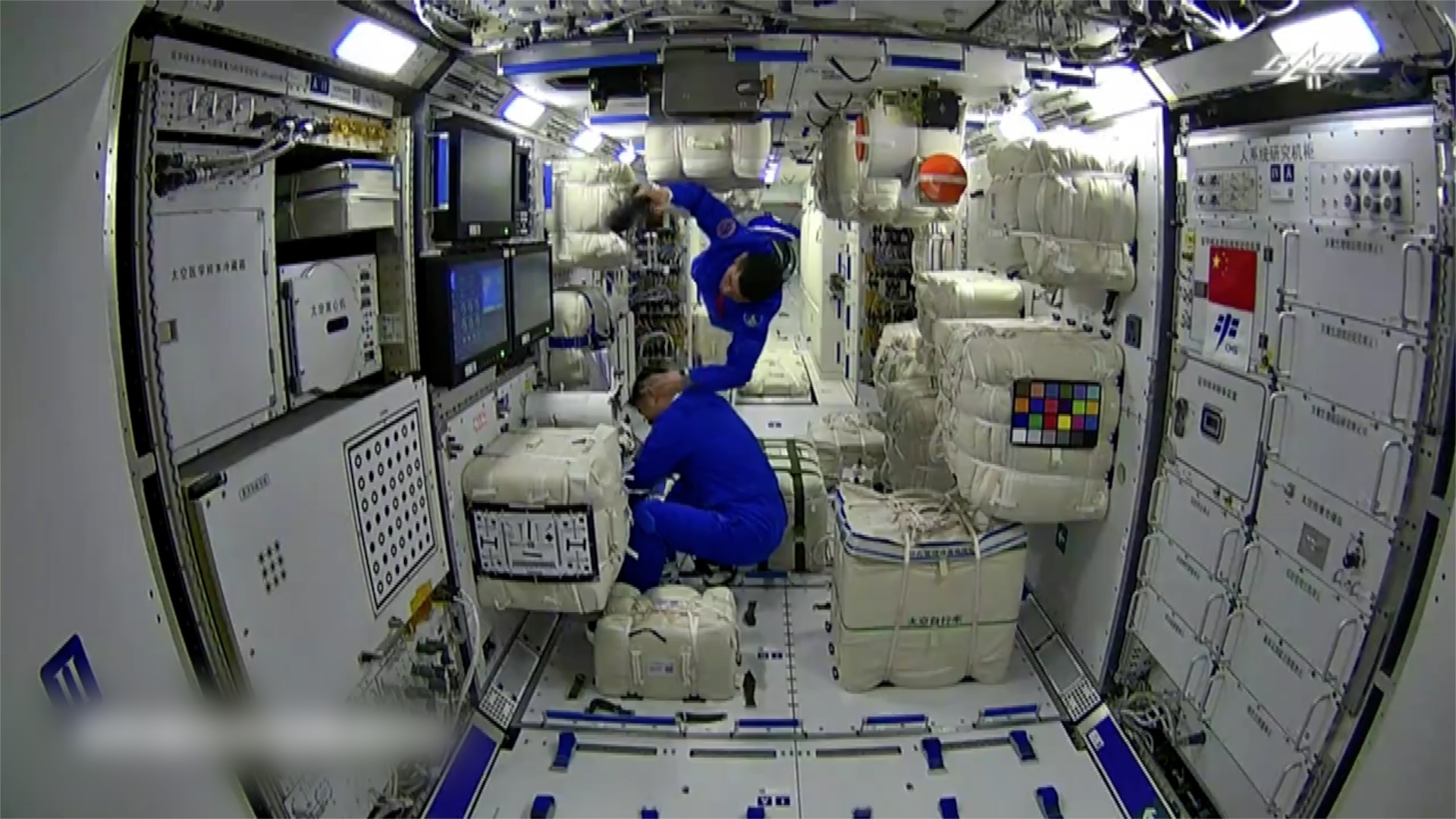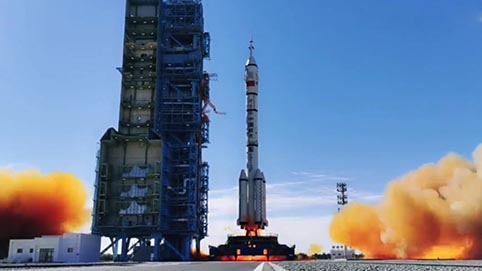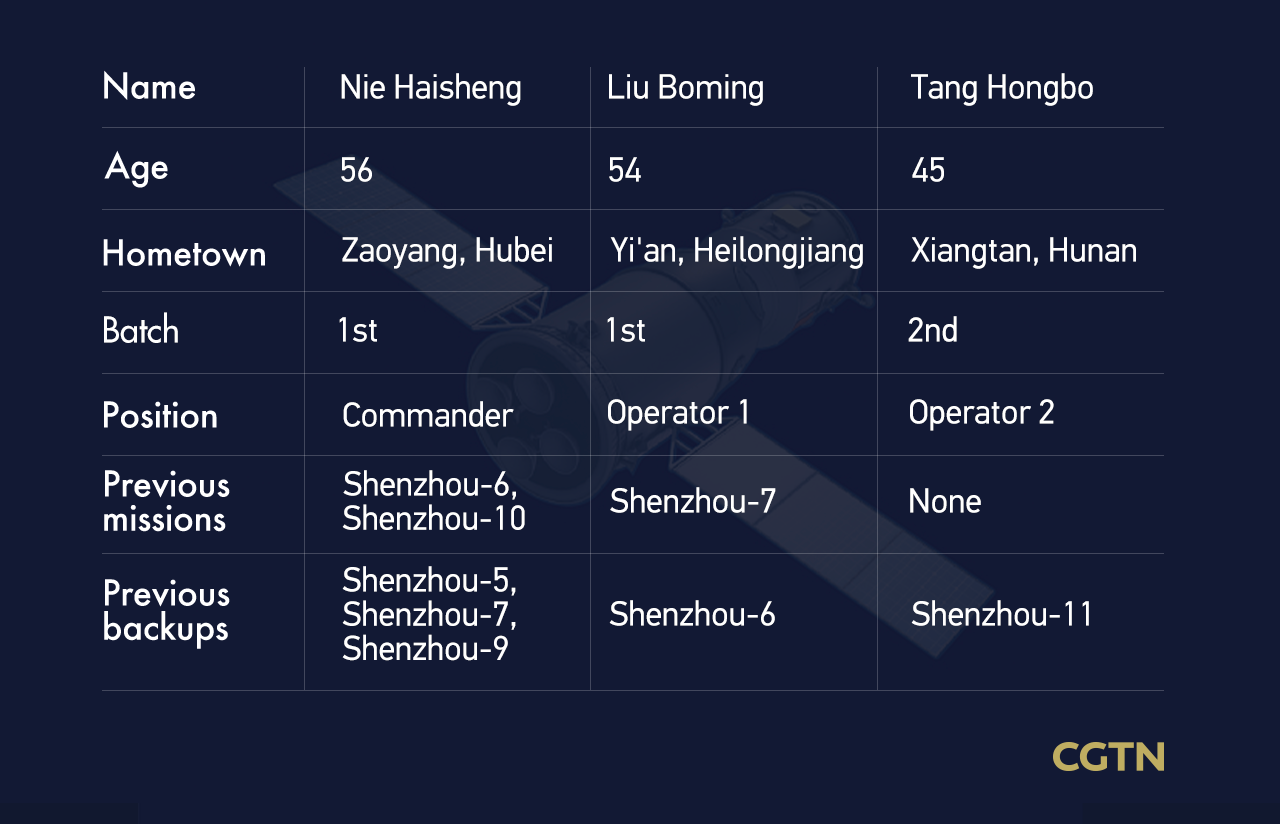00:56

Three Chinese astronauts entered their country's space station during the Shenzhou-12 mission, ending the history of no Chinese in space stations.
The trio, Nie Haisheng, Liu Boming and Tang Hongbo, entered the space station's core module "Tianhe" from the Shenzhou-12 spacecraft launched on Thursday, according to the China Manned Space Engineering Office.
03:06

This came more than 20 years after the International Space Station (ISS) was launched, which does not allow Chinese astronauts to be onboard because of a U.S. law banning the National Aeronautics and Space Administration (NASA) from working with their Chinese counterparts.
As the ISS is retiring and Russia has decided to pull from the project, China has stood out to build a new space station and is inviting global cooperation.
The China space station, orbiting the Earth at a height of about 400 kilometers, is still under construction, as eight more missions including three manned ones are still being prepared.

Currently the station is composed of a core module named Tianhe, a supply ship Tianzhou-2 and the Shenzhou-12, which docked with the space station less than three hours before the entering.
Astronaut, cosmonaut or taikonaut?
Some Chinese are so proud of the latest achievements that they revived the topic of how to name people in space.
The naming problem emerged in the Cold War, when Soviet Union named their space heroes "cosmonauts" while the U.S. called theirs "astronaut."
Later, the word "taikonaut" was coined using the Mandarin equivalent of the word space – taikong – and the common suffix "-naut".
Oxford and Longman dictionaries listed the word taikonaut and said it means a Chinese astronaut.
Some Chinese see the popularity of the word as a sign of China's growing influence in space.

Information about the three astronauts in the Shenzhou-12 mission. /Picture by Yin Yating
Information about the three astronauts in the Shenzhou-12 mission. /Picture by Yin Yating
The next steps
Now the three astronauts are unpacking the supplies on Tianzhou-2, setting up Wi-Fi connections and other equipment on the space station.
They will live in the station for at least three months and conduct various technology test and science experiments, during which spacewalks involving robot arms will also be performed.
Read more:
Here are the first astronauts living in China's space station
What scientific experiments will be done in the China Space Station?
What will astronauts' living space look like?

